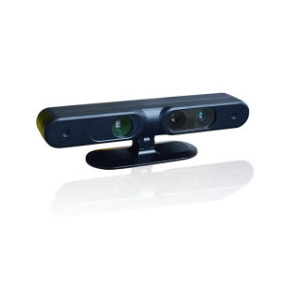Due to the rise in popularity of non-contact 3D scanning over the last few years, people are now more frequently exposed to two types of scanners: laser and white light. It’s easy to get lost in the weeds when it comes to comparing these two technologies. Not to mention how to judge which is better, a laser scanner or a white light scanner. As for which is better, we can’t generalize. Let’s introduce the connections and differences between white light scanner and laser scanner for 3D laser scanning, as well as their respective characteristics, and then you can judge whether they are more suitable for your own needs according to these.

Difference Between White Light And Laser Scanner
First, the principle of the equipment is different. Therefore, they are destined to have different functional characteristics:
- The white light scanner refers to the structured light. Generally, the halogen lamp with high brightness is used as the projection light source for the white light 3D scanner. Generally, the digital camera with more than 15 million pixels is used to track the projection grating. The grating projection is set at the light source. When the grating is projected onto the object, it will produce distortion. After comparing the distortion value with the initially set value, Generate three-dimensional effects and data. Finally, the point cloud data with XYZ coordinates is formed.
- The difference between laser 3D scanner and blue or white light is that the grating medium is changed into laser light. As we all know, the laser is very focused, and the change of light thickness is very small. Such changes can hardly be perceived at a close distance. Therefore, when a very straight laser light is projected onto an object, the change can be almost ignored, When the laser light touches the object surface, it will produce distortion. The built-in camera records the changes and compares them with the initial value to generate three-dimensional data. The final results will also be presented in the form of point cloud.
All the above are based on single acquisition results. Let’s talk about the generation of accuracy error.
The accuracy of structured light 3D scanner is relatively high, while the portability of laser equipment is good. In a single data acquisition, the error basically comes from whether the distance between the 3D scanner and the measured object is consistent with the manufacturer’s recommendation. If it exceeds the recommended range, the error will occur. Another source of error is what kind of camera manufacturers use to record data. The camera is mainly used to perceive the changes of light projected on objects. If the camera quality is not very good, it will also produce large errors. These are the two main sources of error. Other factors affecting the error include temperature, material and external light. These errors combined will not exceed 1%, so the accuracy of both white light and laser scanners is reliable.
Advantages and Disadvantages Of 3D White Light & Laser Scanner
1. 3D White Light Scanner
Advantages: The generated point cloud is more uniform and stable.
Disadvantages: Weak resistance to natural environment interference and high requirements for ambient light. Some objects made of materials need to be sprayed with powder before scanning. The powder is not easy to clean, and high-end objects are not applicable. The equipment needs to be supported and fixed. Scanning large objects requires changing multiple angles and positions and re fixing, which is time-consuming and laborious.
2. 3D Laser Scanner
Advantages: Easy to operate and carry, fast scanning speed; It has strong anti-interference ability and can well adapt to the field measurement environment.
Disadvantages: Photogrammetric equipment such as maxshot is required to measure large objects, otherwise there will be cumulative error.